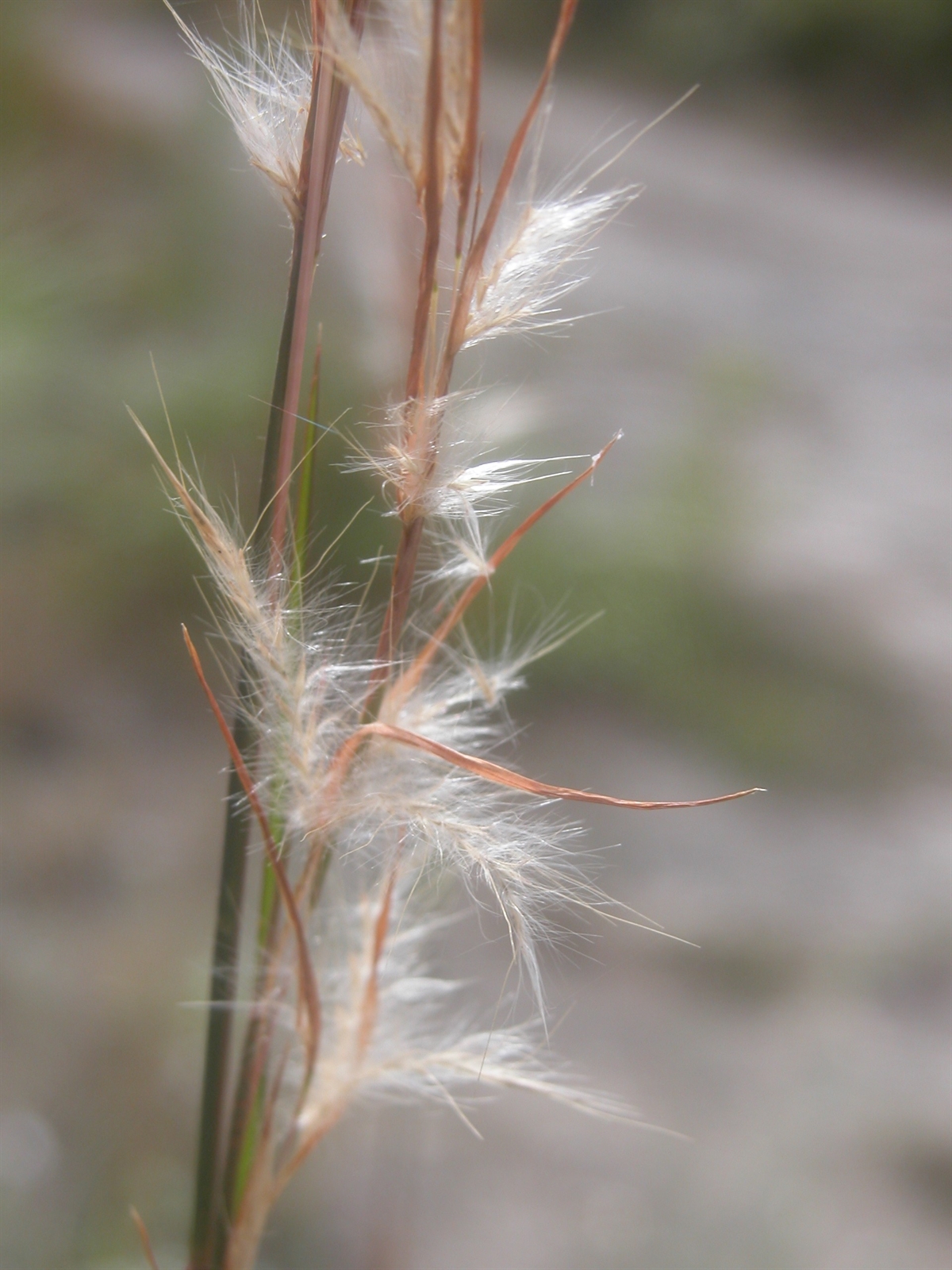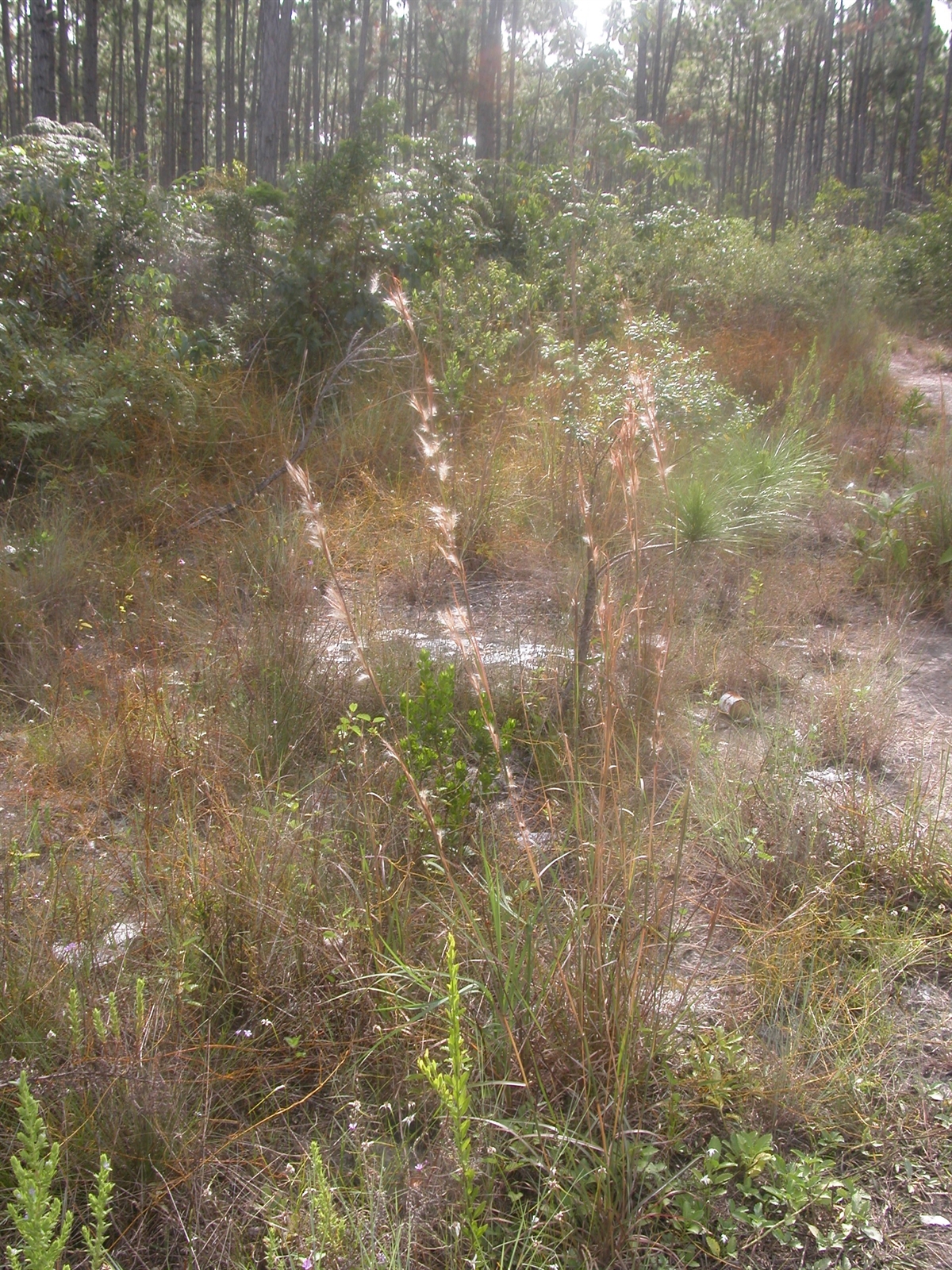Habit: Andropogon virginicus grows as a perennial up to 1.5 m in height. The leaves are arranged alternately with a basal sheath extending along the stem that is pubescent toward the leaf blade. At the point of divergence of the leaf sheath to the leaf blade is a small fringed ligule. The leaves are parallel veined.
The zygomorphic flowers are arranged in few branched terminal and axillary panicles. The flowers are highly modified without identifiable structures such as the calyx or corolla. Each flowering unit is a spikelet that is long pubescent. At the base of the spikelet are 2 yellow brown, ciliate structures called glumes. In each spikelet there are flowering structures each is subtended by 2 additional structures (lemma and palea). The lemma is extended from its tip to form a straight awn to 1.5 cm in length. The lower flower is sterile and the upper fertile and has 1 stamen and a superior ovary each with a single locule and seed. The fruit is a caryopsis with bristles.
One of the key differences between the 2 species of Andropogon in the Bahamian Archipelago is the flower number and density of spikelets in the panicle. For A. glomeratus it has a lot of flowers and the panicle is very dense. In A. virginicus the panicle has far fewer spikelets and the panicle is very open.
Habitat: Andropogon virginicus grows in Pine Woodlands, at the edges of Fresh Water wetlands.
Distribution: Andropogon virginicus occurs on central and northern island groupings within the Lucayan Archipelago as well as the entire Caribbean region and North and Central America.
Medicinal/Cultural/Economic usage: Andropogon virginicus is not known to be used medicinally in the Bahamas.

